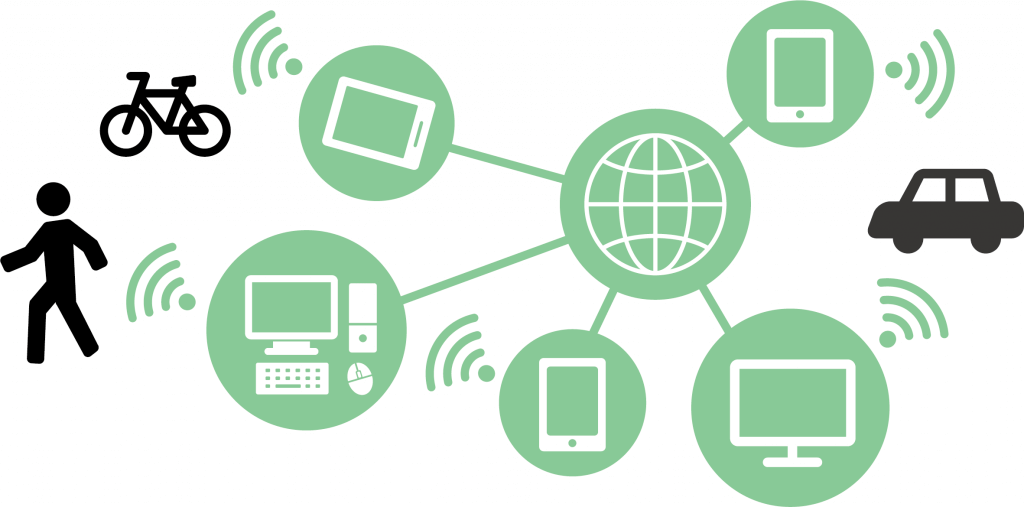
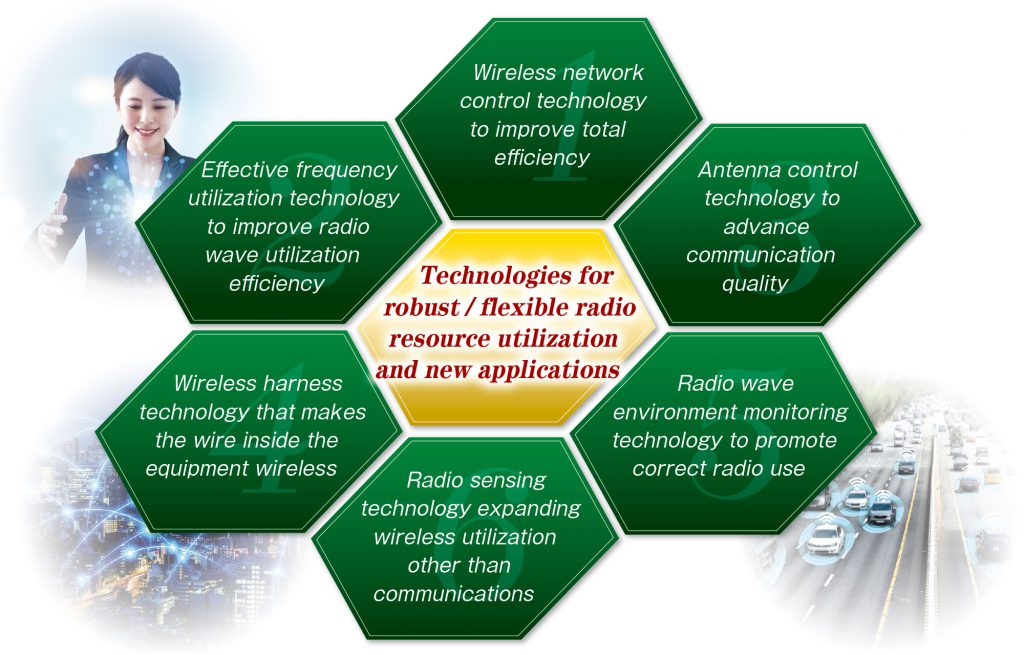
1. Wireless network control technology
By switching the frequency and communication path according to noise, interference, and environment, it improves the overall frequency efficiency and the convenience of communication at a pinpoint. Then, the optimal network is automatically constructed according to the usage.
The noise generated by various electronic devices and interference from other wireless systems are measured and analyzed to control the performance of the managed network according to the influence on the surrounding environment.
We are also developing a wireless system to easily exchange and share information within a certain range using a smartphone during a disaster.
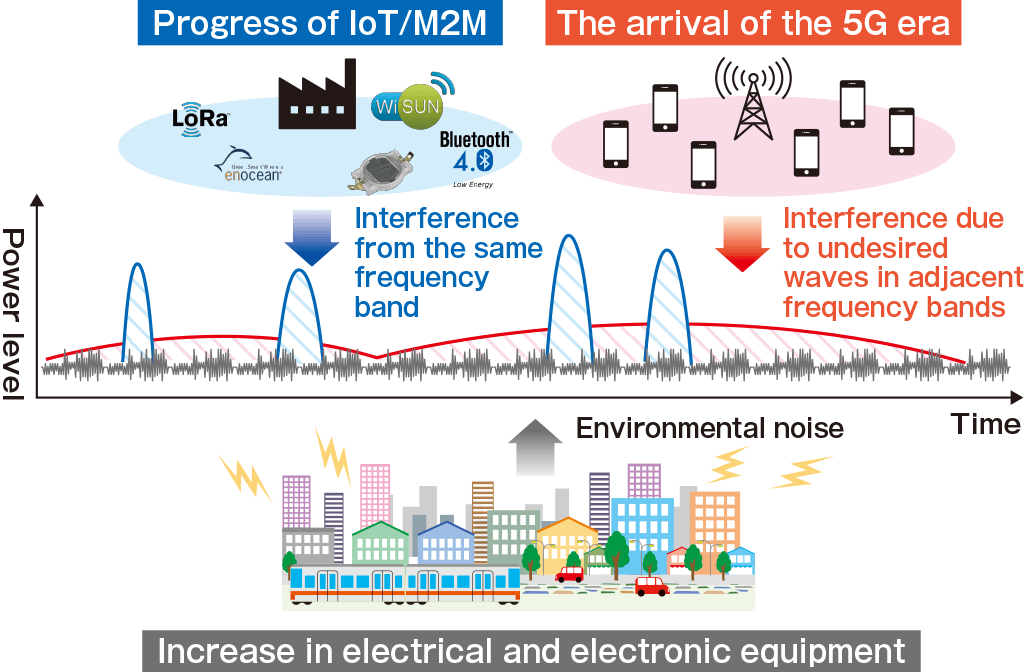
2. Frequency utilization technology
By switching or bundling time / frequency / polarization according to the application, radio waves can be used effectively.
The usage status of channels with different frequencies are checked, and frequency bandwidths are allocated collectively. We are researching frequency allocation methods using AI and other technologies.
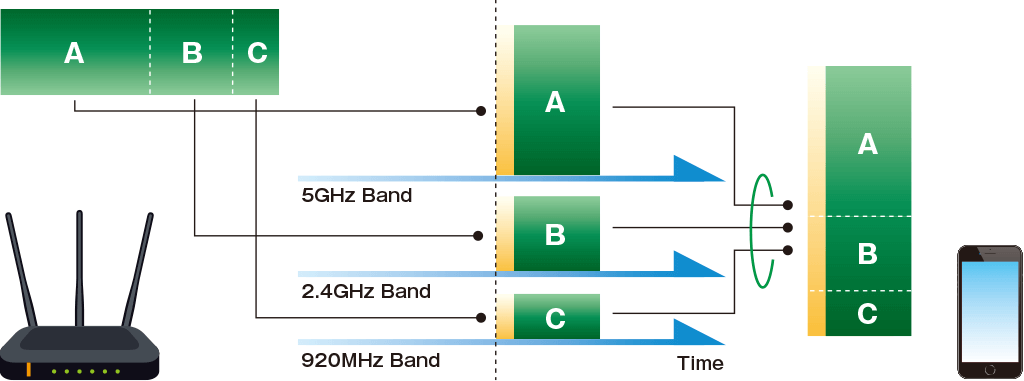
3. Antenna control technology
This technology estimates the direction of arrival of radio waves and improves communication quality by controlling the directivity and polarization of the antenna.
Communication quality is improved by controlling the directivity with reference to the received signal.
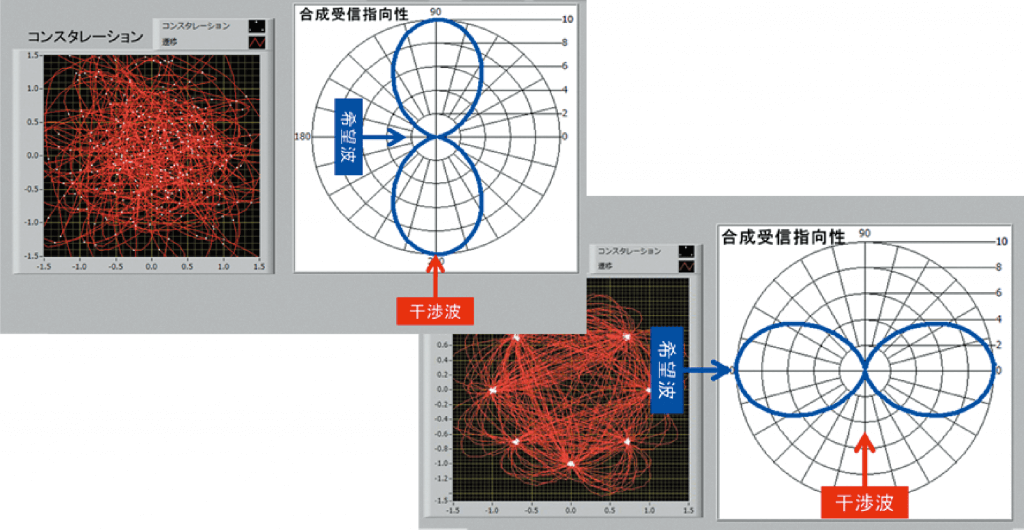
4. Wireless harness technology
This technology makes wiring of information and power inside equipment wireless. Therefore, it reduces design and implementation restrictions associated with wiring and improves operation and maintenance.
We are developing communication systems that implement small antennas and low-delay communication protocols so that they are suitable for complex radio wave propagation inside equipment.
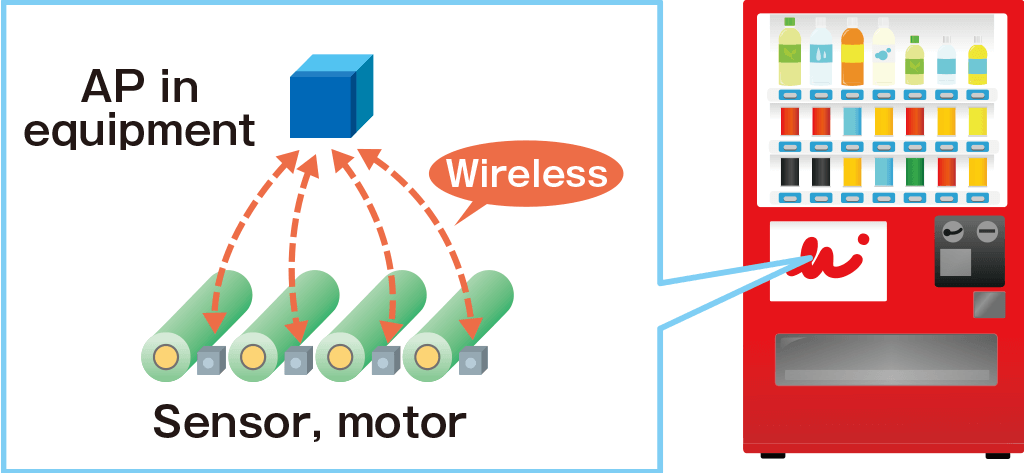
5. Radio environment monitoring technology
Interference waves that may affect communication are measured and analyzed, and the sources are identified.
We analyze the sources and causes of the interference waves contained in them by measuring radio waves and collating them with the interference database based on measurements and records from many locations and environments
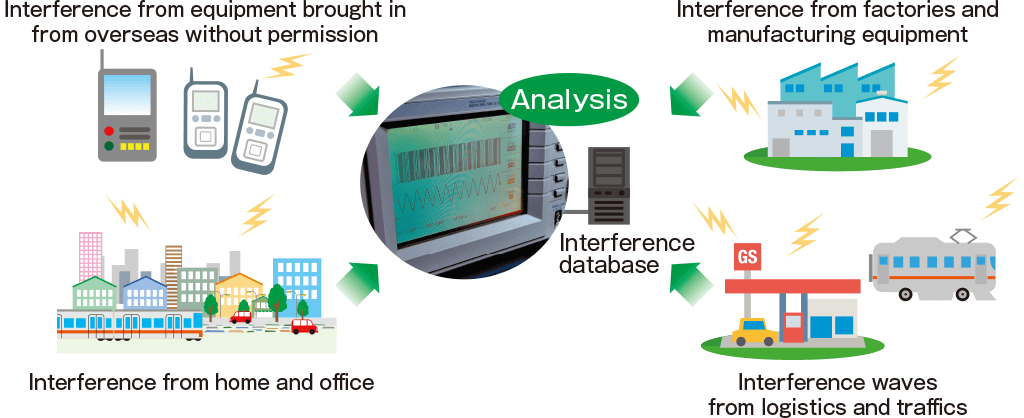
6. Radio sensing technology
Radio waves sense without contact and provide correct information to networks and mechatronics equipment.
By using radio waves, it is possible to detect the presence and state of humans, animals, and objects with high accuracy that could not be achieved with ultrasonic waves. This technology provides new sensors for cars, bicycles, robots, and various other machines, and supports safe mechanical operation.
